Mike Neale tells the interesting story of a very rare survivor in America, a 1963 Ford Econoline Travel Wagon.

Those of you who ‘moved over’ to Classic & Vintage Commercials magazine from Classic Van & Pick-up magazine last year, may remember the pale blue Ford Thames Calthorpe Home Cruiser featured in the March 2020 issue. Well now meet ‘Blue’, its American cousin. More precisely, ‘Blue’ is a 1963 Ford Econoline Travel Wagon with a Calthorpe elevating roof.
Maurice Calthorpe designed and patented the first rising roof for motor road vehicles in Great Britain in 1957, principally for use on camper vans and for the textile trade, but of course he did not register only a UK patent. The U.S. Patent number for the elevating top was 2,926,042.
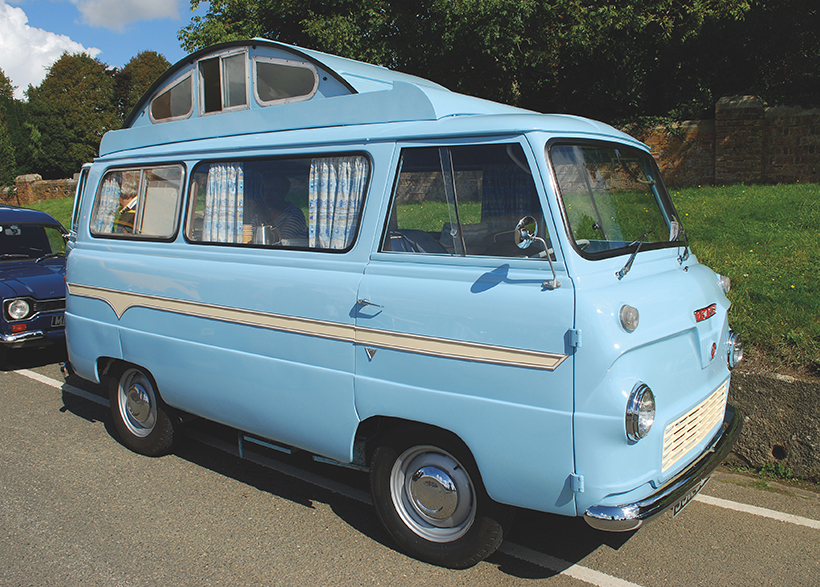
The plaque on the side of Blue’s roof proclaims, “Travel Top by Calthorpe. Travel Equipment Corp. New York, N.Y., USA.” They were in fact based in Elkhart, Indiana, as stated on the metal badge mounted inside the driver’s door of the van.
The Travel Equipment Corporation (TEC) purchased the rights to the patent after it was brought to the U.S. They continued to work with Maurice Calthorpe to improve the elevating top and make it more user-friendly. Compared to the roof on the Thames, the Econoline’s Calthorpe top is rather more arched, making for greater headroom in the centre, so even a 6ft tall person can stand fully upright. Handles on both sides of the roof allow it to be pulled down (or put up) in seconds, ready to be driven in the lowered state.
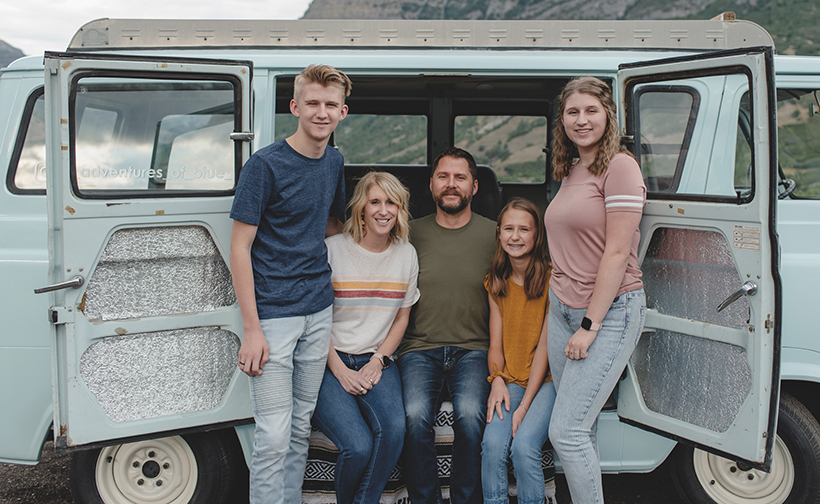
As well as the Ford Econoline, TEC offered pop-top camper conversions based upon the Chevrolet Corvair Greenbrier, Dodge A-100 and Volkswagen Type 2.
The Econoline was effectively the Ford Motor Company’s American equivalent of the Thames 400E, although it was slightly bigger and had a larger engine than the 1703cc four-cylinder Consul unit of the British van.
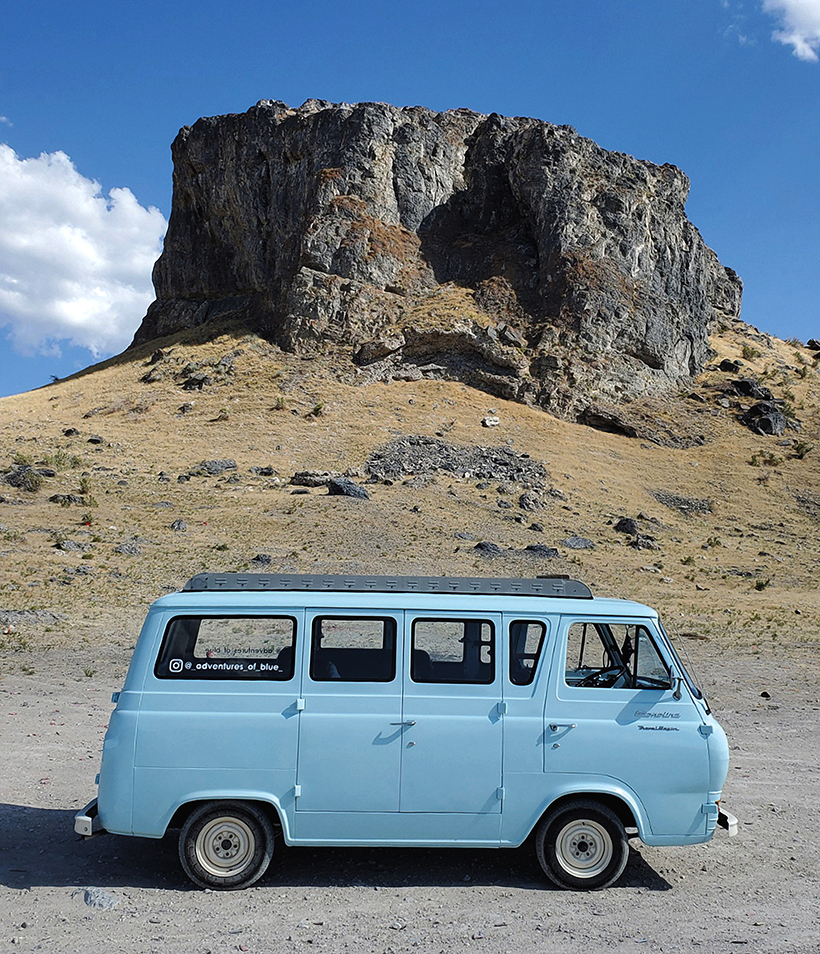
The engine was in fact 170cu.ins, equating to 2781cc. It was a straight-six, similar to that fitted to the Ford Falcon, but a heavier-duty version with mechanical valve-lifters was fitted to the Econoline. The engine was mid-mounted, behind the front axle. The first generation Econoline was launched in 1960 for the 1961 model year and it was built until 1967.
The Travel Wagon came with a 24,000 mile or 24-month warranty (whichever came first) from TEC for the elevating top and camper van furnishings, covering free repair or replacement, whilst a Ford warranty covered the rest of the van on the same basis.
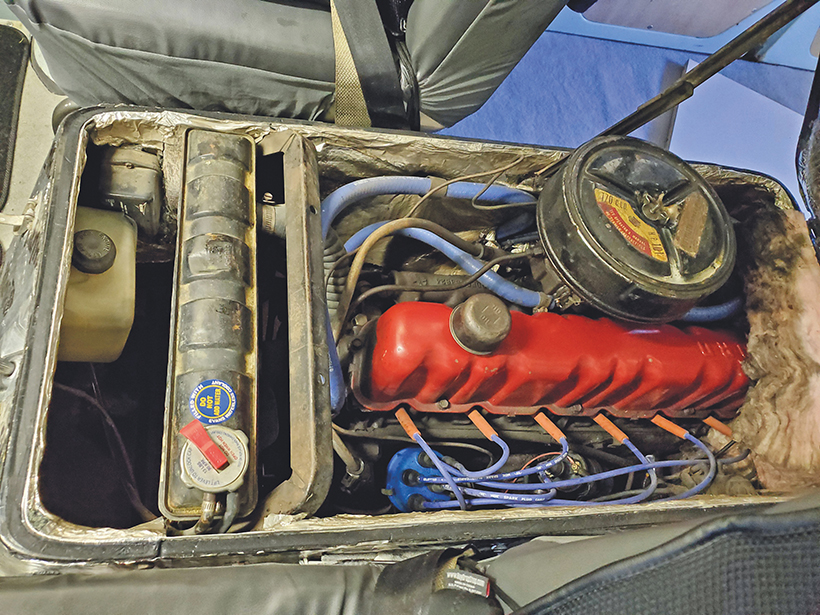
The Econoline Travel Wagon seen here was originally sold by Hippodrome Ford in Nashville, Tennessee in 1963, for a grand total of $3,835.46. It is now owned by Steve Martin of Herriman, Utah, who bought it in August 2018. The seller told him that the van actually belonged to his neighbour who was in his 90s and was believed to have been the original owner. The owner had told the vendor that if he could get it running, he could sell it, but the owner wanted to go for one more ride in it. It had sat for 20 years, but, the seller and his uncle were indeed able to get it going. They took the owner for that last drive as promised before selling the van.
So, what drew Steve to this particular van? “Ever since I can remember, my dad had an old red 1961 Ford Econoline van that was the truck style,” Steve explains. “My dad’s uncle built a shell over the truck portion with a big swing out door on the back. I loved this van and made it mine when I was able to drive. I drove it through high school and college and after I got married and had our first child. We then moved and I stored the old red van at my parents’ house. After a while my mom was complaining about it just sitting there, so, after a failed attempt to fly down and drive it home, I ended up selling it. I regretted it ever since.”
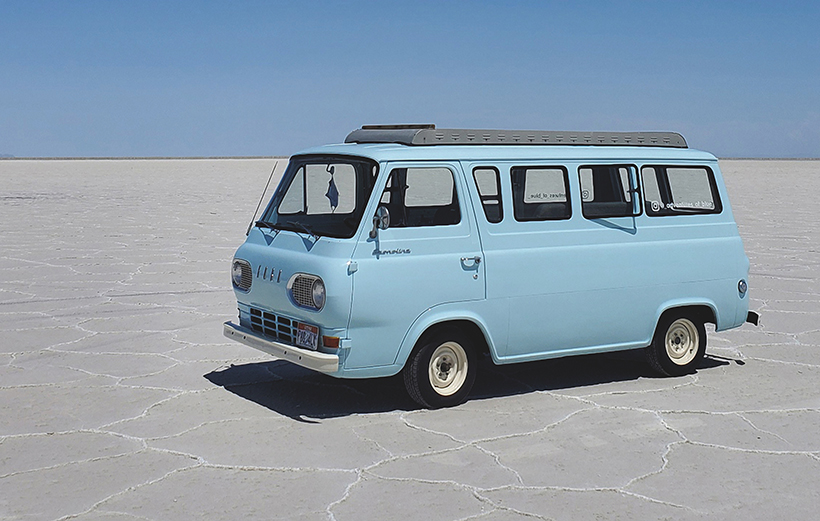
Fast forward a few years and Steve happened to see this Econoline camper listed on eBay. It nearly didn’t happen, however. “Just for fun I decided to be the first bidder, thinking there was no way I would actually win. Blue was simply too awesome to go for the initial asking bid.”
This did indeed prove to be the case. At the very last second, he was outbid by $100. “I think my wife, Jenny, was relieved. Over the next few days, I found myself sad that I didn’t win,” laments Steve.
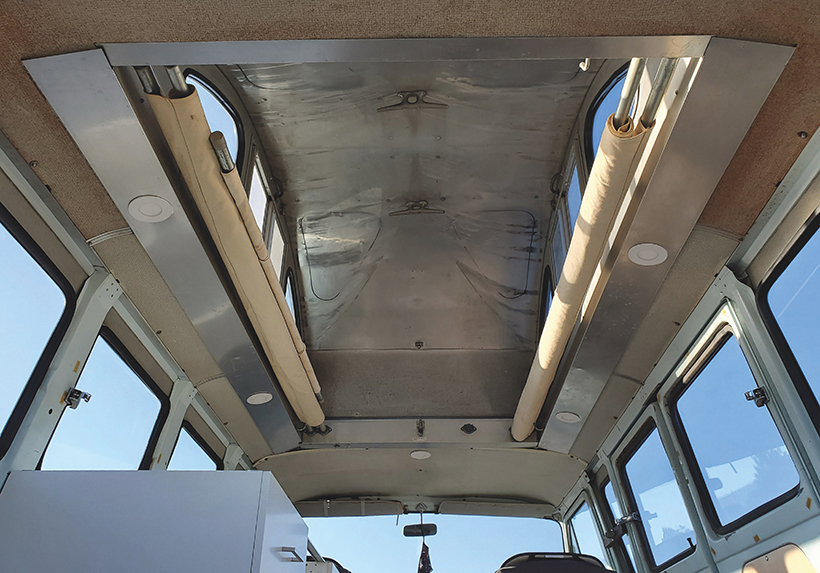
After a week of stewing, he decided to reach out to the vendor to say that, if the sale fell through, he would still like to buy it. To Steve’s surprise, he responded and said that the sale had in fact fallen through and the winner had never paid or come to collect the van, so it was his if he wanted it.
Steve wired over the money and then set about trying to find a transport company to deliver it to him in Utah. The first one fell through as the van wouldn’t fit, so it was about a month later before the van arrived. “I’m grateful to have her, and she still reminds me of my dad. I am certain that he would have loved her,” notes Steve.
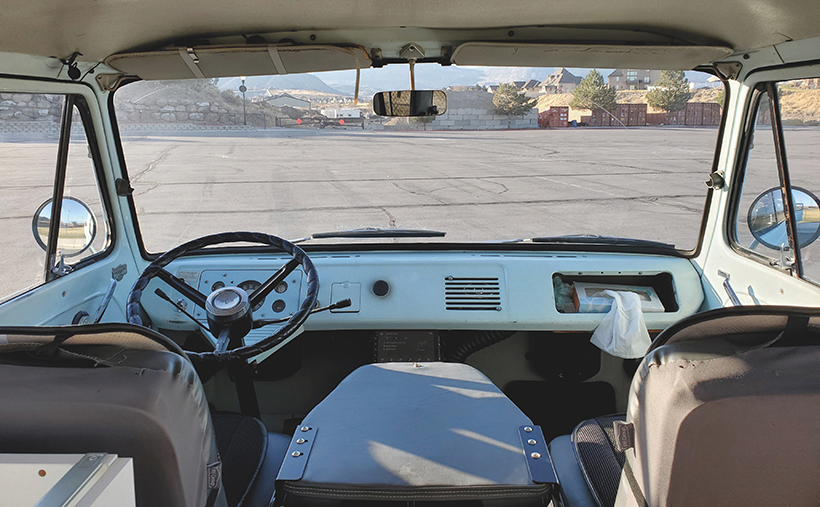
He is now gradually restoring the van. It was roadworthy and in decent shape overall, but did need brake work and the engine would stall at times when coming to a stop. Replacing the carburettor seemed to cure that. He had someone carry out some body repairs and repaint the van in the original colour, Glacier Blue.
Parts aren’t too hard to come by. Steve has found a lot of things online. His auto body guy purchased a single body panel online and cut it up to use for rust repairs in a few different places. The online forum www.ford-trucks.com is also a good resource for information, answers and advice.
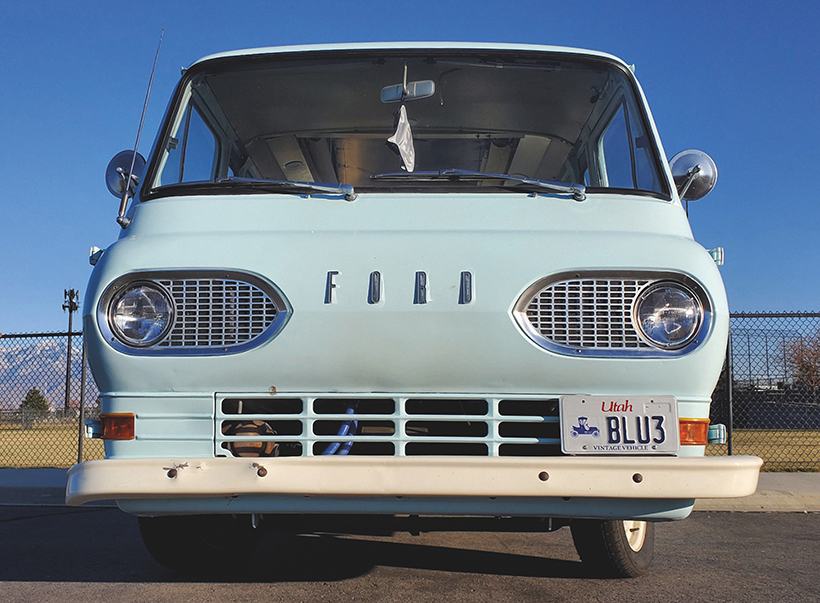
The engine is believed to be the van’s original, showing about 30,350 miles on it, but Steve assumes it has been round the clock once, making 130,350, although he doesn’t know for sure. The gearbox is a three-speed manual column-change. “My dad’s old 1961 was also ‘three-on-the-tree’ and when I drove Blue for the first time, it was like no time had passed,” recalls Steve. “Sometimes you have to get used the feel of a new car, the acceleration, the braking, when to shift, etc. But Blue felt just like the old red van.”
A happy cruising speed is about 60mph, although Steve does sometimes push it beyond that. His dad’s uncle had put an overdrive into the old red van which allowed it one more overdrive gear, so it was able to maintain a cruising speed of 75-80. He would like to locate one of these overdrive systems and have it installed in Blue.
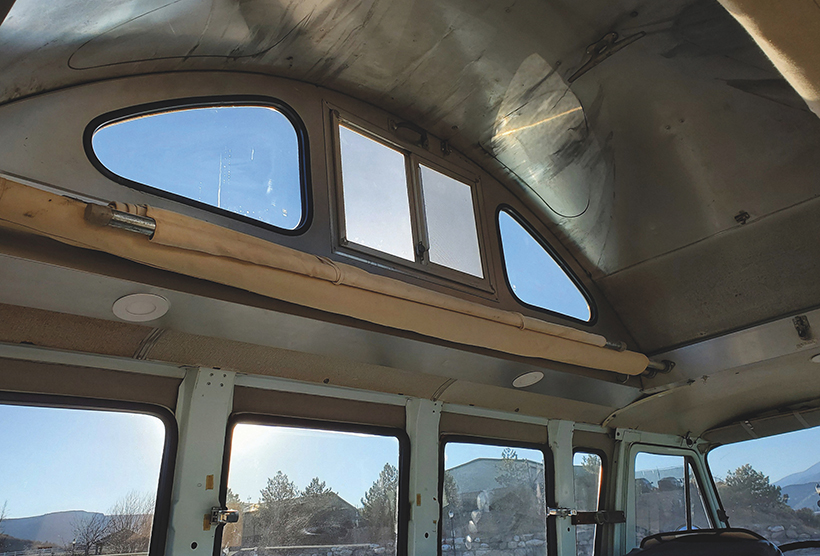
It came with the original interior which Steve still has in his garage, but the wood was rotten in places. He was originally going to use it as a template and rebuild the original layout, but has since decided to rebuild it with a different configuration. The work is underway but not yet completed. When finished, it will have a dinette in the very back between the wheel wells. New cabinets and counters have been fitted in the middle section including a 12v fridge, a sink, and a single burner stove.
Steve has not really restored any vehicles before, other than doing repairs and some interior work on the old red van years ago. Nonetheless he has bought another project that he plans to do up with his son Tyler, for him to drive once he passes his test, in the form of a green Ford F100 pickup, known as ‘Green’, obviously.
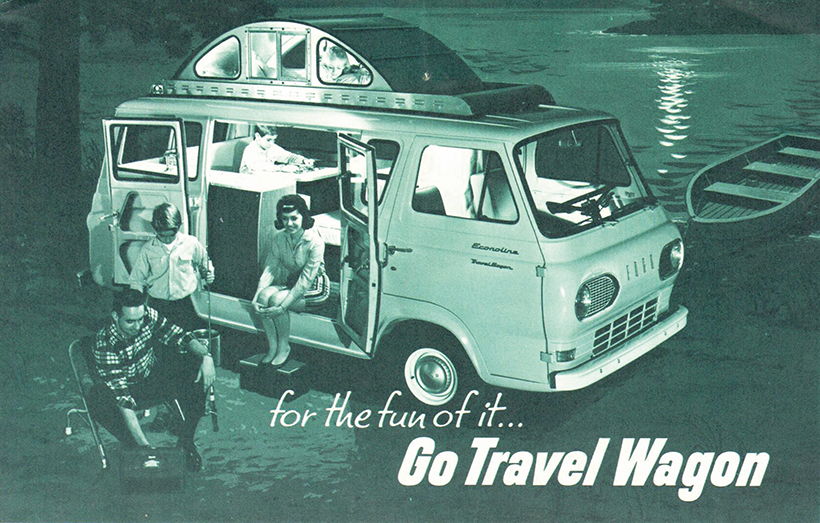
Now Steve drives the van whenever he can. As he works from home, he takes it for grocery runs, out to dinner, running the kids to dance practice, etc. “I look for excuses to take Blue out. Sunday morning before anyone else wakes up I like to just go for a drive.”
Fortunately, despite her initial relief when Steve didn’t win the auction, his wife Jenny now loves Blue and even designed a T-shirt featuring the van. Daughters Abby and Makenna and son Tyler also love the van.
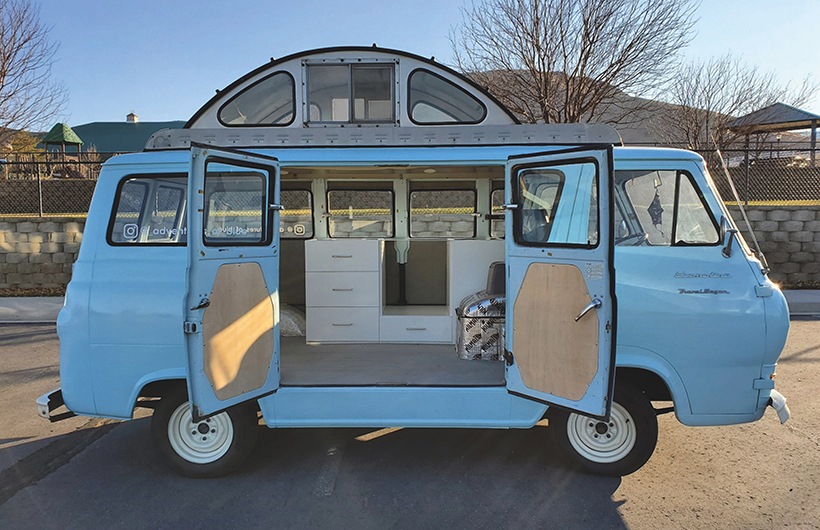
It is quite a rarity. “You see the first generation Econolines here and there, but not that often, and I’ve never seen one in person that has a pop-top like Blue,” notes Steve. It looks like this one is in good hands.
With thanks to Steve Martin for his help with this feature and for providing the photographs.
You can follow the van on Instagram @_adventures_of_blue_
For a money-saving subscription to Classic & Vintage Commercials magazine, simply click here

